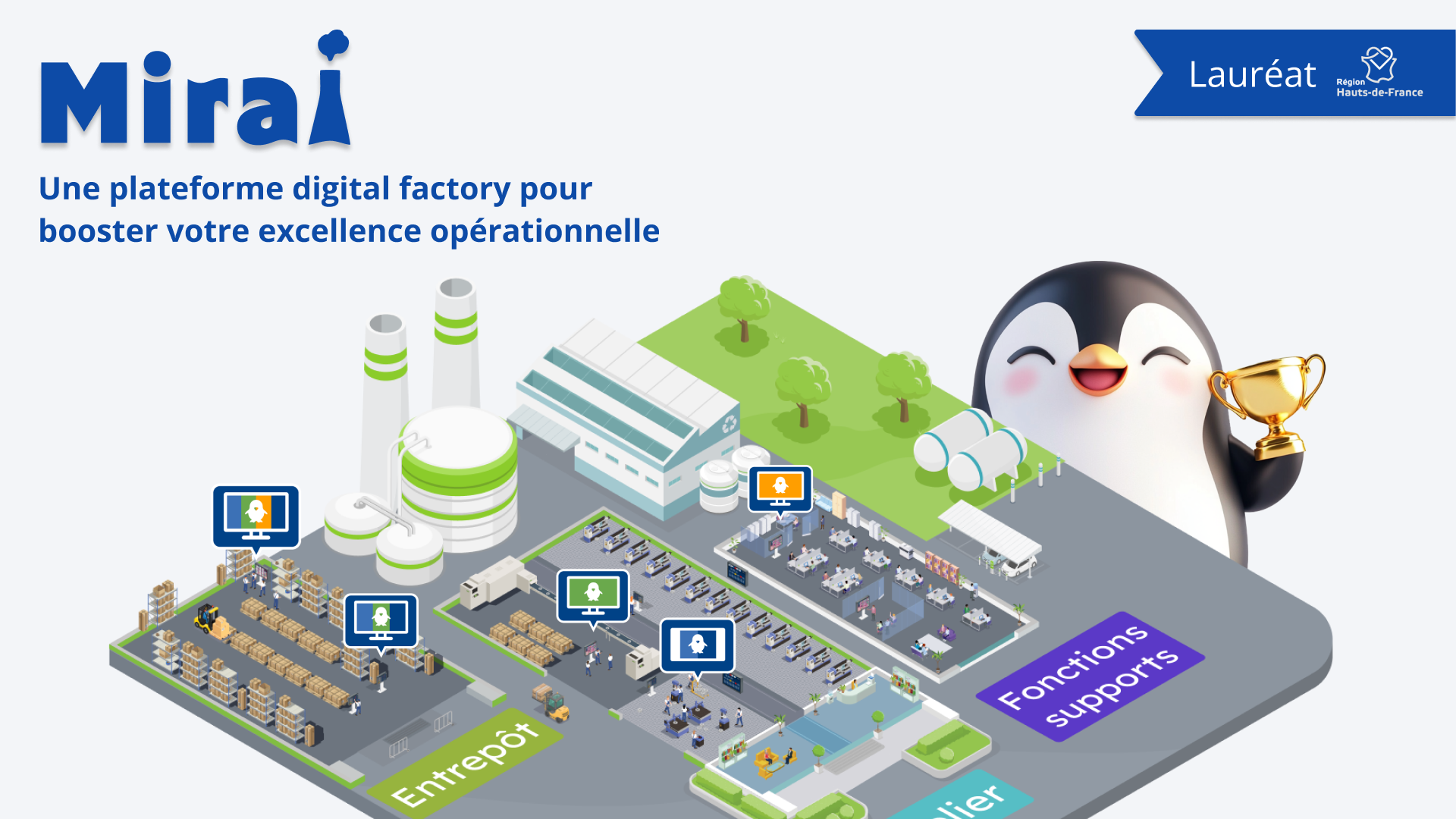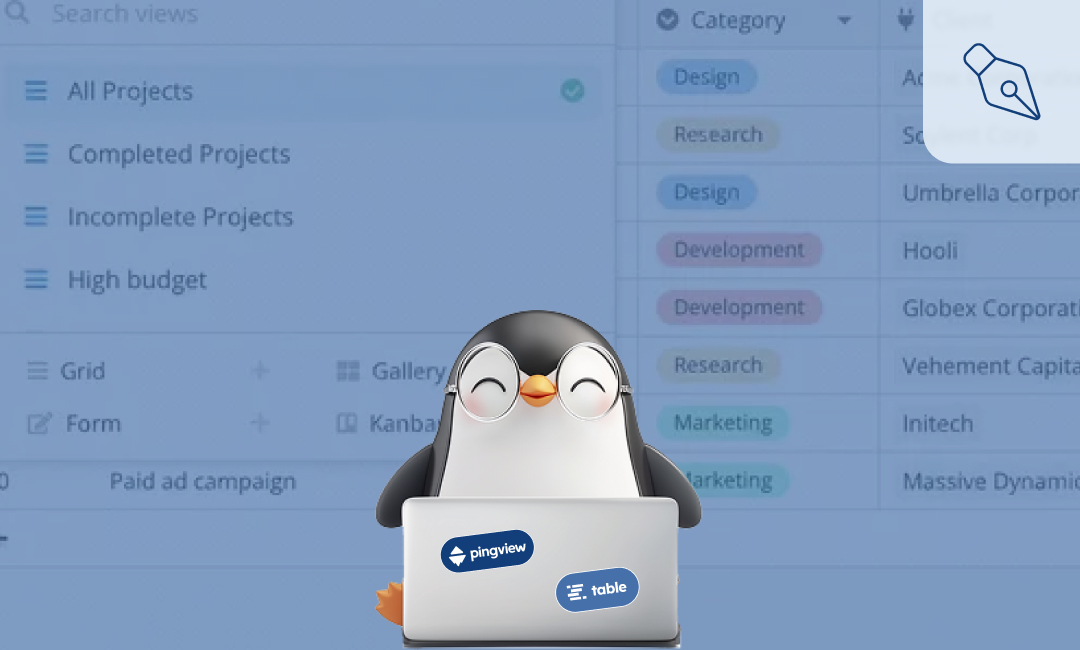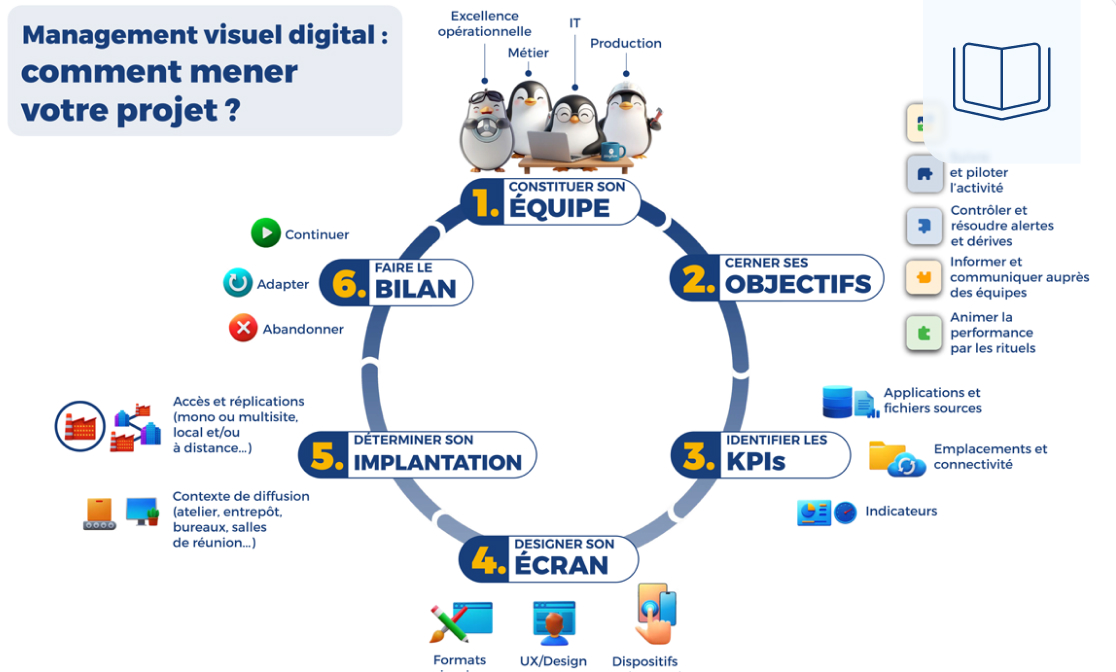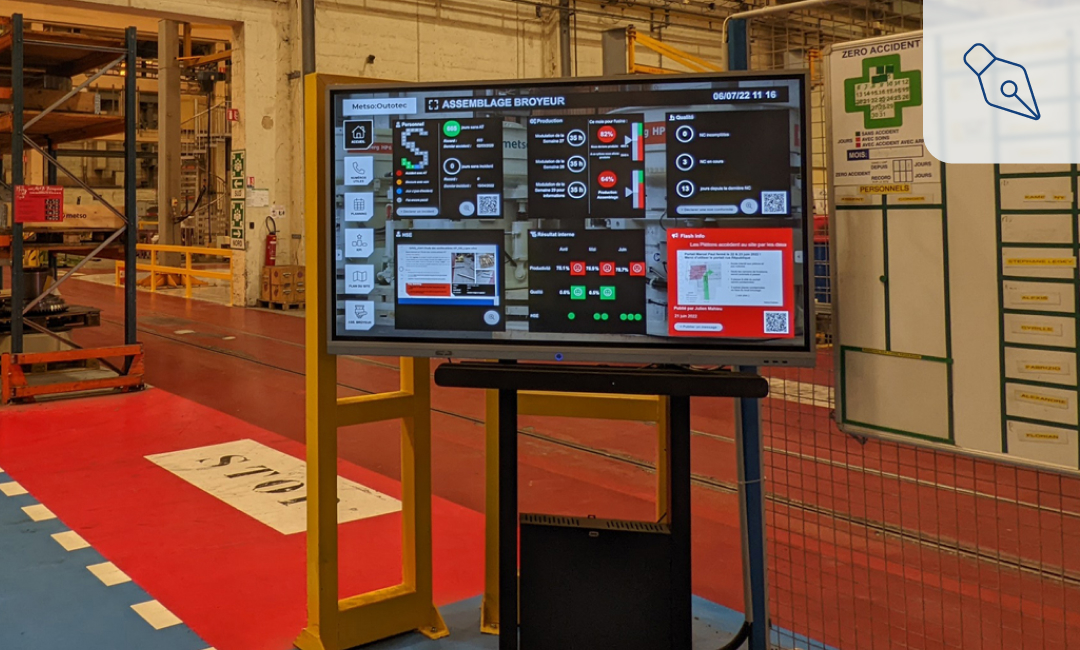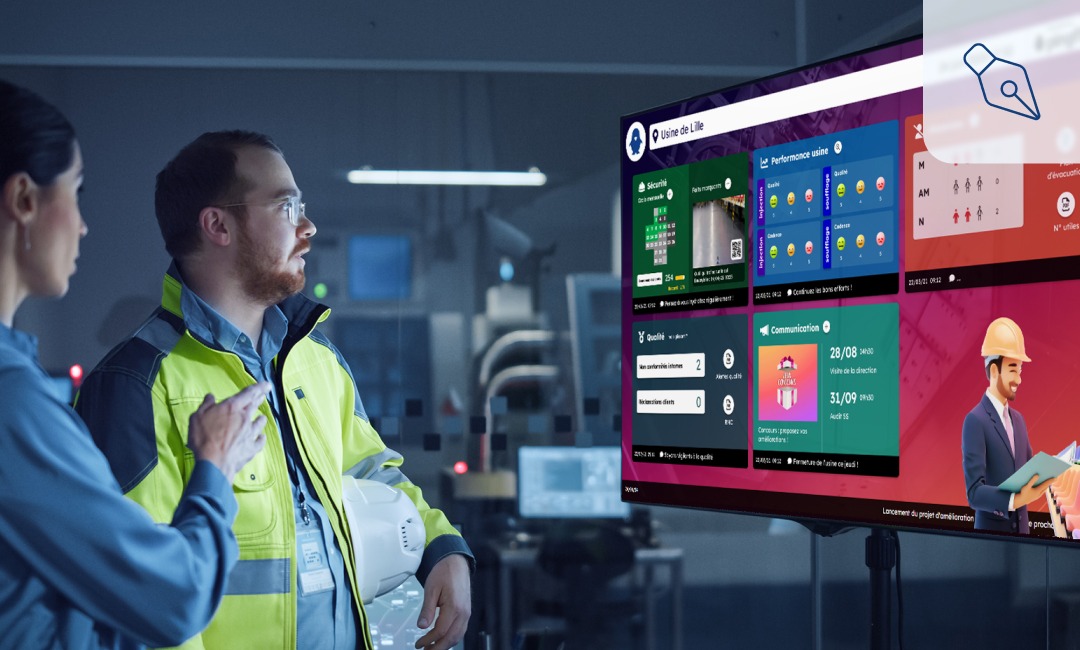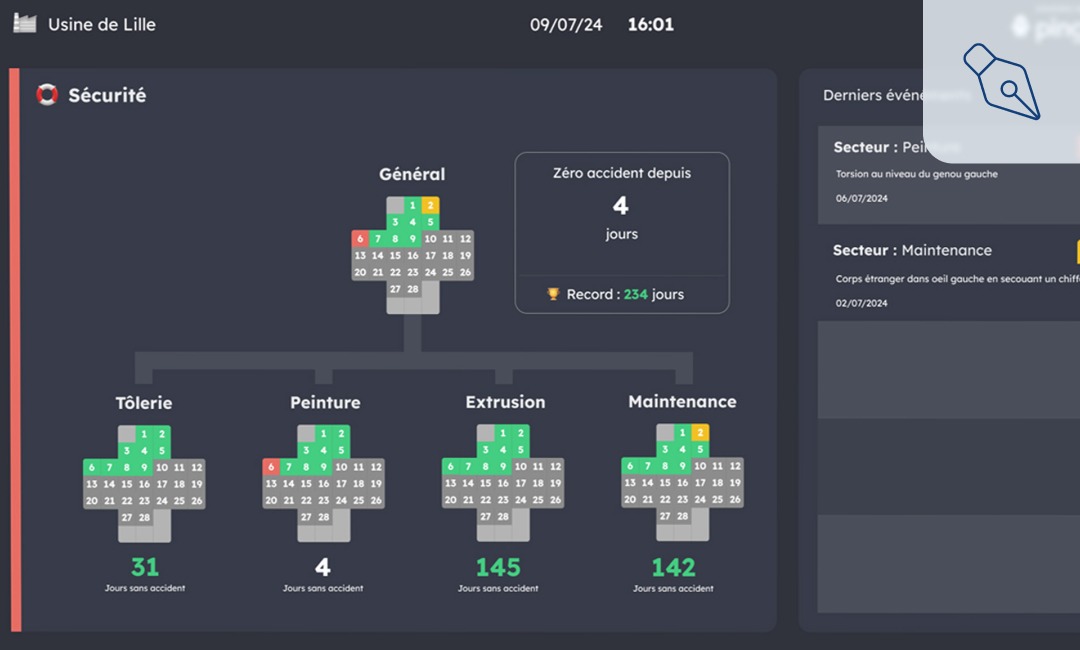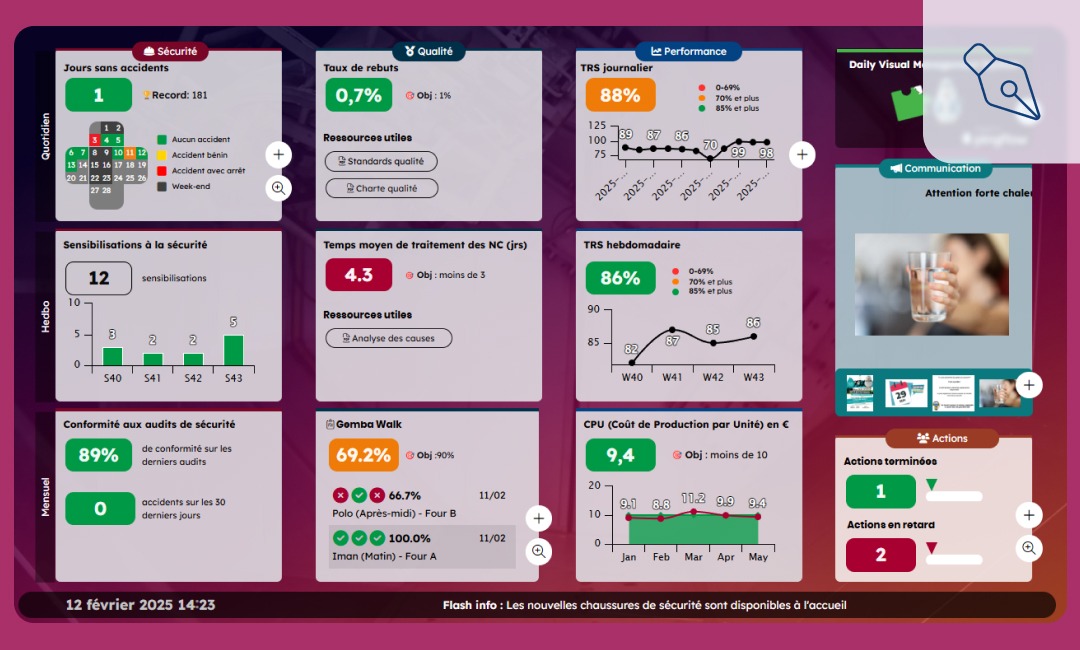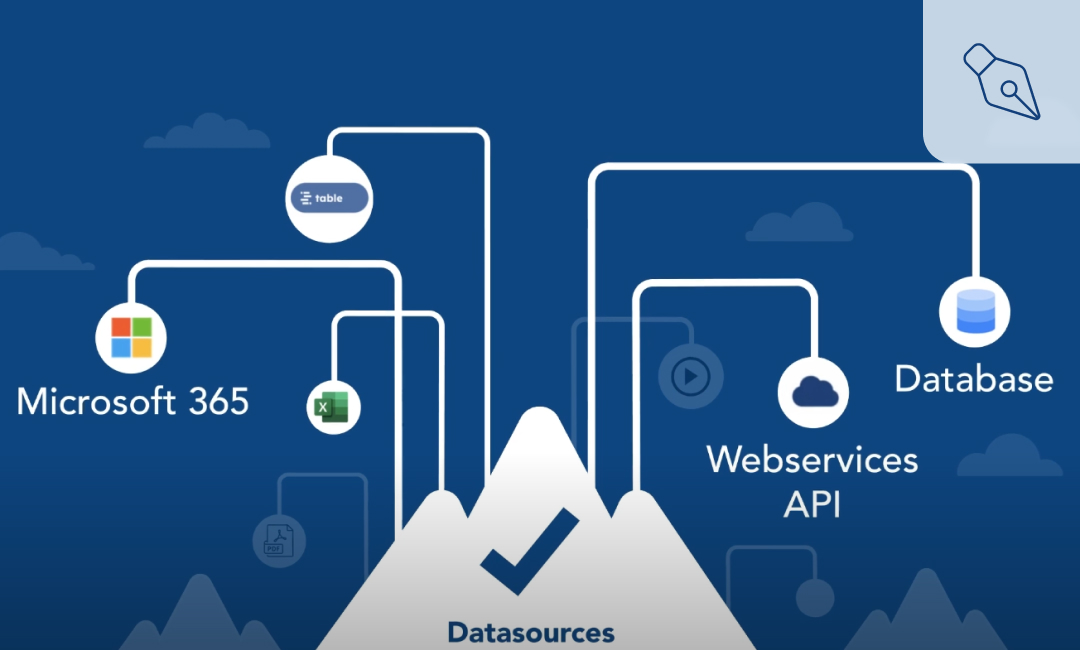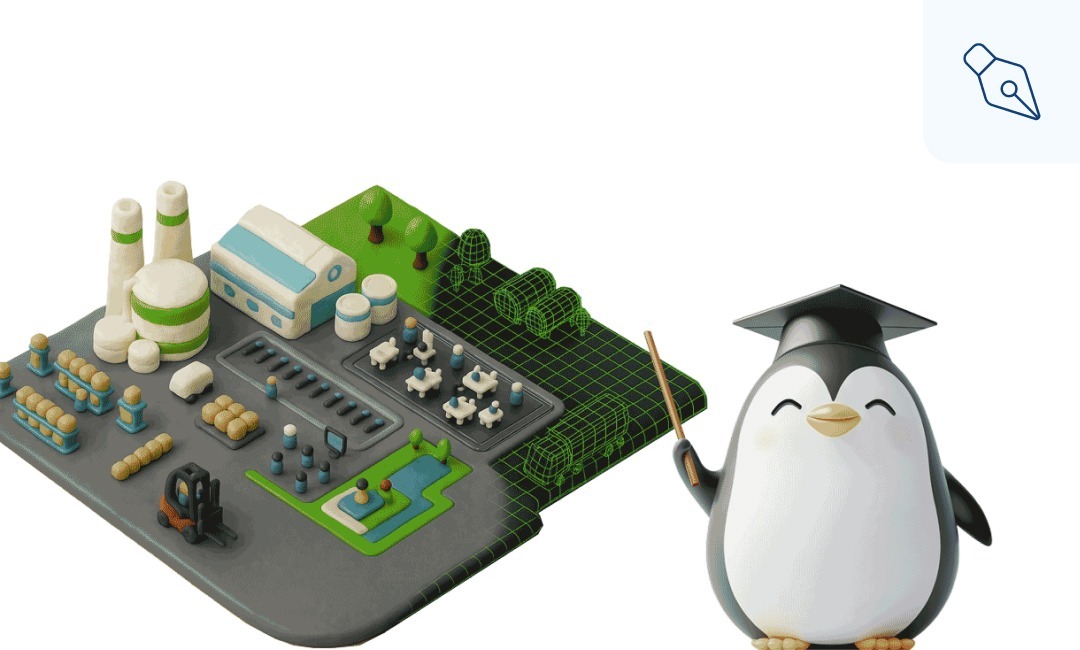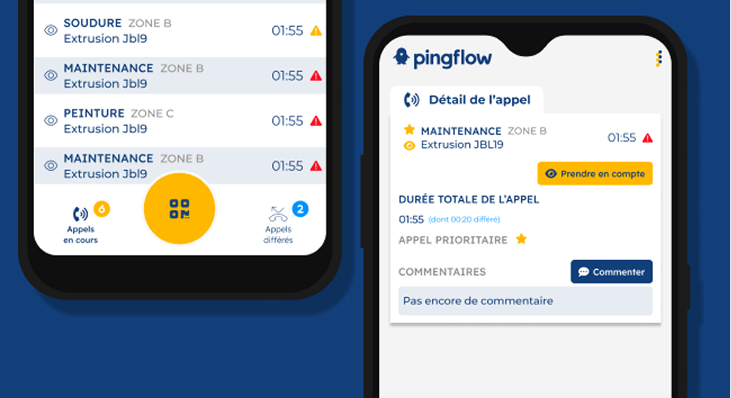Développer plus vite, sans savoir programmer, des applications conçues par et pour vos équipes : la promesse des plateformes No (ou Low) Code est belle. Comment cela se traduit-il au niveau de la production, et comment tirer parti des potentialités de cette nouvelle génération d’outils pour servir votre excellence opérationnelle ?
Low Code/No Code : de quoi s’agit-il ?
No Code et Low Code sont des modes de programmation de logiciel… sans programmation (No Code), ou très peu (Low Code). Plus précisément d’outils qui permettent de développer une application informatique sans avoir à écrire son code.
Les solutions No Code passent par un environnement de développement intégré (IDE, Integrated Development Environment) :
- visuel,
- fonctionnant par glisser/déposer d’éléments de composants informatiques,
- que l’on va pouvoir ensuite relier entre eux, avec d’éventuelles conditions, pour concevoir une sorte de “scénario” de fonctionnement de l’application.
Le nom est donc en réalité un peu trompeur : les plateformes No Code comme Low Code contiennent évidemment (beaucoup) de code : mais leurs utilisateurs n’ont pas besoin d’y accéder pour y développer leurs outils.

Low Code, No Code : quelles différences ?
Dans une application No Code, tout se déroule dans les limites des composants prévus par les concepteurs, les utilisateurs n’accédant pas au code source, et ne pouvant pas introduire de possibilités supplémentaires. Ces solutions sont donc plutôt dédiées à des applications très simples ou extrêmement ciblées.
Pingview, notre solution de conception de wallboards, est un exemple d’application No Code, qui fonctionne sur ce modèle car il est possible de bâtir une bibliothèque de composants suffisamment complète pour permettre à nos utilisateurs de gérer en toute autonomie la création de leurs interfaces, et leur diffusion sur leur parc d’affichage.
Un environnement Low Code permet de modifier le code source, et offre donc plus de possibilités d’expression. On pourra y concevoir des applications plus complexes, mais en recourant à un développeur expert, là où les systèmes No Code peuvent être directement pris en main par les utilisateurs “métier” (on parle aussi de citizen developers, développeurs citoyens, par opposition aux développeurs professionnels).
Low Code/No Code : pourquoi ils ont la cote ?
Parce qu’il y a pénurie de compétences informatiques
Ce n’est pas un scoop : les métiers de l’IT en général sont en grande tension depuis longtemps et encore pour un moment : d’ici 2030, il y aura 115 000 nouveaux postes d’ingénieurs informatiques à pourvoir en France (+26% par rapport à 2019), et même 190 000 en incluant les départs à la retraite.
Les compétences de développeurs sont rares… donc chères, avec des embouteillages de plus en plus prononcés dans les projets de développement d’application. Et comme dans le même temps les projets de digitalisation n’ont pas franchement ralenti :
- 61% des professionnels de l’IT constatent une augmentation de leurs coûts de développement,
- 57% ont besoin de plus de personnel pour faire aboutir les projets,
- 44% observent que les délais de développement ont augmenté [1].
Dans ce contexte, les projets No Code apportent une partie de la solution : pour ceux qui l’ont vécu, un phénomène similaire a eu lieu il y a une quinzaine d’années avec la création de blocs fonctionnels d’automatismes dans l’industrie automobile. Permettant aux développeurs experts de se libérer de la programmation des automatismes en la déléguant aux équipes métiers.
Le Low Code/No Code, c’est moins cher (et plus rapide)
53% moins cher [1] : c’est l’économie observée en moyenne grâce au développement Low Code par les professionnels de l’IT. Un gain réalisé grâce une collaboration simplifiée entre les équipes, mais aussi une plus grande vitesse d’exécution :
- 95% des développements sont plus rapides avec le Low code,
- plus de la moitié (58%) sont même 40%, 60% voire 100% plus rapides [2].
Avec le No Code, les entreprises touchent ainsi au “Graal” de la transformation digitale : l’agilité.
95% des projets de développements sont plus rapides en No Code
53% d’économies observées sur les développements en No code
Avec le Low Code/No Code, les utilisateurs “métier” sont aux commandes
Si les “vrais” informaticiens ne dédaignent pas leur utilisation, 2 développeurs sur 3 des plateformes de développement No Code sont les utilisateurs finaux [2]. Avec des projets très orientées sur leur problématiques “métier” [1] :
38% des usages
Collecte automatisée des données : 36% des usages
35% des usages
34% des usages
Low code et No Code viennent donc combler un manque de plus en plus criant dans les organisations : l’automatisation de tâches chronophages. Et le besoin est énorme : seuls 10% de ces process sont entièrement automatisés, 30% ne le sont pas du tout [2].
L’usine du futur, un environnement digitalisé grâce au Low Code/No Code
Quels sont les cas d’usages du No Code en milieu industriel ?
AIC : des supports d’animation à jour en temps réel pour vos rituels quotidiens
Les animations à intervalle court (AIC), ces réunions “flash” d’équipe sont le pivot de votre excellence opérationnelle et de votre amélioration continue ? Avec une solution de conception de wallboards no-code, vous allez pouvoir :
- collecter les données nécessaires à la construction de vos indicateurs de sécurité, qualité, coût, délai… directement dans les applications dédiées,
- automatiser leur “retraitement” dans une base de données ou un tableur pour les présenter sous forme de KPIs simples,
- les mettre en forme dans votre interface de wallboard dans la restitution graphique la plus parlante (graphique, tableau, codes couleurs…),
- les diffuser enfin sur votre parc d’écrans : dans les espaces de réunion, les zones d’usine concernées, une page web consultable sur ordinateur depuis les bureaux…
Dans ce cadre, le choix d’une solution No (ou Low) Code permet :
- de paramétrer une fois pour toutes la collecte et le retraitement des données : les KPI pour le point quotidien sont donc à jour en permanence et n’ont plus à être préparés à l’avance,
- de challenger et de revoir vos écrans d’animation (ajouter une “rubrique” Environnement à vos écrans SQCDP, revoir la présentation d’un KPI de production…) aussi souvent que voulu, sans intervention extérieure.
OKR : des grands enjeux partagés
Toujours dans une optique d’animation et d’alignement des équipes, mais avec une vision plus long terme, les OKR (Objective and Key Results) visent à donner le “la” des axes de progrès de l’entreprise (ou de la business unit) :
- au travers d’objectifs très “macro” (par exemple : “réduire notre délai moyen de livraison de X%”),
- qu’on complète souvent par des KPIs plus précis au niveau des métiers : dans notre exemple, des KPI pour l’administration des ventes (Z% des commandes lancées en production sous 48h), la logistique (baisser de Y% le délai moyen de présence des lots sur les quais d’expédition), la production (cycle de production moyen cible : H heures).
Grâce à une solution de conception de wallboards No Code, vous allez pouvoir très simplement :
- créer des écrans synthétisant vos OKR et les diffuser de façon transverse à toutes vos équipes
- leur adjoindre des écrans de KPIs métiers mis à jour en temps réel pour permettre à chacun de visualiser la progression de son équipe vers l’atteinte des objectifs.
Gestion d’incidents et résolution de problèmes : digitaliser pour gagner en vélocité
En milieu industriel, la réactivité est clé. Cette réactivité passe par :
- la mise en place de process à suivre en cas d’incident de production (appel à un superviseur, “escalade” au manager, intervention d’équipes sécurité….),
- une communication bien huilée : des messages qui parviennent aux bonnes personnes, des opérateurs qui sont assurés que leur alerte a bien été transmise, puis prise en compte, et traitée.
Là encore, un système d’alerting No Code présente bien des avantages pour des équipes de production qui cherchent à concevoir et maintenir une application de gestions d’incidents :
- elles gardent la main sur la mise à jour des composants du système d’alerte (coordonnées des personnes à contacter, mise à jour des process d’escalade…)
- elles peuvent interfacer le système d’information qui “pilote” la production, les appareils de déclaration d’incident, les capteurs machines…
- au-delà de l’usine stricto sensu, elles peuvent organiser la remontée des informations de crise vers les services “annexes” : prévenir l’administration des ventes, la logistique, la direction…
- … et au-delà de la gestion d’incidents, permettre de mettre en place un process digital de résolution de problèmes (avec par exemple des plans d’action et des vues kanban).
Conception et utilisation de wallboards « No Code » dans l’industrie : nos clients témoignent
La solution avec Pingview et Table est clairement un accélérateur de digitalisation pour répondre rapidement à divers besoins des sites industriels. Avec les solutions existantes comme Excel, nous n’aurions pas pu répondre aussi rapidement à des demandes des entités qui étaient urgentes. De plus, elle évite tous les problèmes de traitement de données que nous avions avec Excel et les temps de formation à prévoir.Les points forts:la rapidité de mise en œuvre des besoins,la structuration de la donnée (figer la donnée, avec le même format et les bonnes catégories),pour une agrégation et exploitation facilitée notamment avec des équipes à l’international,une adoption des utilisateurs rapide sans besoin de formation ni de compétence technique.Une fois le besoin métier clair, la solution est très intuitive pour créer la base et donc le projet dans la solution. L’import d’Excel ou de fichier permet également un démarrage plus rapide pour éviter une ressaisie des informations. Une explication de 5 à 10 min suffit ensuite pour rendre autonome les utilisateurs dans la visualisation et l’administration.
C’est ultra rapide !
Cathy Tondu, Digital product manager chez ARaymond
L’avantage de la solution Table est qu’elle est hyper accessible, sans besoin de s’y connaître en IT ou bases de données. C’est intuitif, modulable et très rapide à implémenter. On est capable de recréer facilement une table, des formulaires, etc. avec surtout la possibilité de créer autant de formulaires que l’on souhaite. Pour les utilisateurs (opérateurs / équipe terrain sur le site), le QR code depuis le wallboard est ultra pratique pour afficher un formulaire et faciliter la saisie, notamment pour des gemba walk. Nous avons désormais d’autres cas d’usage en tête (OK démarrage, contrôle qualité avec photos, etc.)
François Huyge Responsable de production, chez Atlantic (Billy Berclau)
No code : oui… no règles : non !
Low Code/No Code : des atouts incontestables
La (relative) simplicité offerte par les plateformes No Code présente bien des avantages :
- elle permet aux métiers de s’affranchir de la DSI pour lancer le développement ses propres applications (tout en permettant à la DSI de se concentrer sur des missions plus critiques),
- elle élimine les incompréhensions : quand le développeur est aussi l’utilisateur, il part rarement sur de fausses pistes…,
- elle simplifie la démarche tester/adapter/itérer : une application rudimentaire peut rapidement être déployée sur un périmètre restreint, corrigée de ses imperfections, puis généralisée,
- elle automatise un grand nombre de process, grâce à des API, ou via des solutions de “workflow automation” (comme Zapier, Integromat ou n8n), qui permettent aux plateformes No Code de s’interfacer avec de nombreuses applications.
… mais des risques à bien mesurer
Revers de la médaille :
- confier le développement à des non-professionnels peut présenter des risques (en termes de sécurité des données, ou si l’application “touche” à des applications critiques),
- concevoir ses applications dans un environnement No Code dans le Cloud ou en SaaS impose de bien examiner les dispositions contractuelles sur la sécurité des données, les conditions de sortie…
S’affranchir complètement des “experts” IT n’est donc pas toujours la meilleure solution. Chez Pingflow, nous considérons que pour vous permettre de disposer d’un outil No Code flexible et puissant, il faut :
- solliciter votre DSI pour encadrer : l’usage et les droits d’utilisation de votre plateforme No Code, les clauses du contrat avec votre fournisseur de solution…
- exiger de votre plateforme Low Code/No Code un vrai accompagnement : fonctionnel, formation, UX/UI design… C’est en tous cas ce que nous proposons à tous nos clients.
Sources :
1. The State of Low Code 2021, Mendix
2. The State of Low-Code/No-Code, 2021, Creatio



